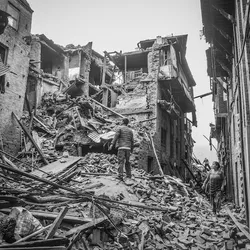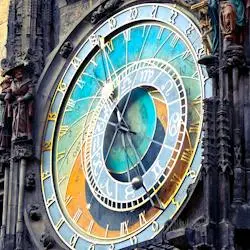
Level 1:
A big shake happened in Morocco. It broke buildings and hurt people. Many people died. The big shake was in a town named Ighil. It was close to Marrakech. People felt the ground move at night. It was scary. People ran out of their houses. The big shake lasted a little bit. Then, there was another smaller shake. It hurt more buildings.
People took videos of broken buildings. Marrakech’s walls got hurt. They are red. Marrakech is special. People felt the shake far away. In Portugal and Algeria, they felt it too. A special person said this shake was different. It was very strong for here. Earthquakes are not normal in Morocco. We need to be ready. Morocco will fix the broken places. People are sad, but they are strong.
Level 2:
A big earthquake hit Morocco. It happened on September 8, 2023, at night. The earthquake was very strong, with a magnitude of 6.8. It started near a town called Ighil, not far from Marrakech. Many buildings were damaged, and sadly, hundreds of people lost their lives. Some people were hurt and had to go to the hospital.
People were scared when the ground shook. They ran out of their homes because they were afraid of more shaking. The earthquake lasted for a little while, and then there was a smaller shake afterward.
Videos showed buildings that were destroyed, and even the famous red walls of Marrakech were damaged. The earthquake’s impact was felt in places like Portugal and Algeria, which are far from Morocco.
Experts say this earthquake was unusual for the region. Earthquakes don’t happen very often in Morocco, so people were not prepared. But Morocco will work hard to fix everything, and people will help each other to recover from this disaster.
Full Story:
In a shocking turn of events, a powerful earthquake struck Morocco late on the night of September 8, 2023. This natural disaster left a trail of destruction, taking the lives of hundreds of people and leaving many more injured. The quake, with a magnitude of 6.8, had its epicenter near the town of Ighil in Al Haouz Province, approximately 44 miles south of the historic city of Marrakech.
Morocco, a place known more for its vibrant culture and stunning landscapes than for earthquakes, was caught off guard by the intensity of this seismic event. So, what exactly happened, and why did it happen here?
The earthquake struck at 11:11 pm local time, sending shockwaves through the region that lasted for several seconds. Following the initial quake, a magnitude-4.9 aftershock hit just 19 minutes later, compounding the fear and chaos that had already gripped the affected areas.
One of the immediate questions that arise is, why was this earthquake so destructive? To answer that, we need to look at the depth of the epicenter. The US Geological Survey reported that it was just 11 miles below the Earth’s surface, while Morocco’s seismic agency estimated it to be at a depth of 5 miles. Whichever measurement you take, these shallow quakes are more dangerous because they are closer to the surface, causing more significant shaking and damage.
In the aftermath of the quake, Morocco’s Interior Ministry reported that at least 296 people had lost their lives, and more than 150 injured individuals were rushed to hospitals for treatment. The ministry also noted that most of the damage occurred outside of the major cities and towns, affecting smaller villages nestled in the Atlas Mountains.
Videos shared by Moroccans on social media painted a grim picture of the devastation. Buildings had been reduced to rubble and dust, and even parts of Marrakech’s iconic red walls, which encircle the city’s historic center, were damaged. This UNESCO World Heritage site had been a beacon of Morocco’s rich history and culture, and now, it too bore the scars of this unprecedented event.
The earthquake’s impact was not limited to Morocco alone. Reports surfaced of people feeling the tremors as far away as Portugal and Algeria, emphasizing the sheer force of this seismic event. So, what made this earthquake different from what is typically seen in the region, and why did it strike with such intensity?
To provide some insight, we turned to Lahcen Mhanni, the Head of the Seismic Monitoring and Warning Department at the National Institute of Geophysics. According to him, this earthquake was nothing short of “exceptional.” He explained that mountainous regions, like the one near the epicenter, do not typically produce earthquakes of this magnitude. In fact, this was the strongest earthquake ever recorded in the region.
The rarity of such seismic activity in North Africa had lulled many into a false sense of security. Earthquakes were not considered a significant threat in this part of the world, leading to a lack of preparedness that was now evident in the face of this catastrophe.
In the aftermath of this tragic event, many questions remain unanswered. How will Morocco recover from this disaster? What measures will be put in place to prevent such a catastrophe in the future? And how can other regions with similar geological profiles prepare for the unexpected?
One thing is certain, though. Morocco, a country renowned for its resilience and vibrant culture, will unite to rebuild and support those affected by this tragedy. The scars left by this earthquake will serve as a reminder of the need for preparedness and vigilance, even in places where earthquakes are considered rare.
As the world watches, our hearts go out to the people of Morocco as they come to terms with the loss and destruction caused by this powerful earthquake. In the face of adversity, their strength and determination will undoubtedly shine through, offering hope for a brighter future amidst the rubble.
Questions:
Question: How did the earthquake in Morocco impact the city of Marrakech and its historic red walls?
Answer: The earthquake had a significant impact on the city of Marrakech, especially its historic red walls. As shown in videos shared by locals, the earthquake caused damage to the iconic red walls that surround Marrakech’s old city. These walls are part of a UNESCO World Heritage site, and their damage is a substantial blow to Morocco’s cultural heritage. The earthquake’s powerful shaking resulted in cracks, fractures, and portions of the walls collapsing, which will require extensive restoration efforts to return them to their former glory.
Question: How deep was the earthquake’s epicenter, and why is the depth important in assessing its impact?
Answer: The depth of the earthquake’s epicenter was a critical factor in assessing its impact. According to reports, the epicenter was either 11 miles or 5 miles below the Earth’s surface, depending on the source. Regardless of the exact measurement, both depths are considered shallow for earthquakes. Shallow earthquakes are more dangerous because they are closer to the surface, leading to stronger shaking and causing more damage to buildings and infrastructure. This shallow depth contributed to the significant destruction seen in Morocco, resulting in collapsed buildings and widespread devastation, particularly in the areas near the epicenter.
Question: What made this earthquake in Morocco unique compared to earthquakes in the region?
Answer: This earthquake in Morocco was unique because it was exceptionally strong and rare for the region. Morocco and North Africa, in general, are not known for frequent seismic activity. According to Lahcen Mhanni, a seismic expert, the earthquake was “exceptional” for mountainous regions like the one near the epicenter. Such regions typically do not produce earthquakes of this size. In fact, it was the most potent earthquake ever recorded in the area. This rarity of large earthquakes in North Africa had led to a lack of preparedness and awareness, making the impact even more devastating.
Question: How did the earthquake impact areas outside of major cities and towns in Morocco?
Answer: The earthquake had a significant impact on areas outside of major cities and towns in Morocco. According to the country’s Interior Ministry, most of the damage occurred in smaller villages located in the Atlas Mountains and the provinces near the epicenter. While the earthquake did affect some cities and towns, its most severe consequences were felt in these rural areas. Many buildings in these villages were reduced to rubble and dust, and the local infrastructure was severely damaged. The earthquake highlighted the vulnerability of these less populated regions and the importance of disaster preparedness in all areas, not just urban centers.
Question: What measures can Morocco take to prevent such a catastrophe in the future?
Answer: To prevent future catastrophes like this earthquake, Morocco can take several measures. First and foremost, the country can invest in earthquake-resistant building codes and construction practices to ensure that buildings are better equipped to withstand seismic activity. Additionally, public awareness campaigns can educate citizens about earthquake safety and preparedness, teaching them how to react during an earthquake and what to do afterward. Morocco can also strengthen its emergency response and disaster management systems to ensure a swift and coordinated response in case of future earthquakes. Lastly, ongoing seismic monitoring and research can help identify earthquake-prone areas and contribute to early warning systems, providing valuable time for people to seek safety. These measures combined can help mitigate the impact of earthquakes in the future.
Fill in the Blanks:
preparedness, scars, Earthquake, Seismic, seismic, earthquake, epicenter, resilience, devastation, aftershock
In a shocking turn of events, a powerful ________ struck Morocco late on the night of September 8, 2023.
The quake, with a magnitude of 6.8, had its ________ near the town of Ighil in Al Haouz Province, approximately 44 miles south of the historic city of Marrakech.
Morocco, a place known more for its vibrant culture and stunning landscapes than for earthquakes, was caught off guard by the intensity of this ________ event.
Following the initial quake, a magnitude-4.9 ________ hit just 19 minutes later, compounding the fear and chaos that had already gripped the affected areas.
Videos shared by Moroccans on social media painted a grim picture of the ________.
This UNESCO World Heritage site had been a beacon of Morocco’s rich history and culture, and now, it too bore the ________ of this unprecedented event.
To provide some insight, we turned to Lahcen Mhanni, the Head of the ________ Monitoring and Warning Department at the National Institute of Geophysics.
Earthquakes were not considered a significant threat in this part of the world, leading to a lack of ________ that was now evident in the face of this catastrophe.
Morocco, a country renowned for its ________ and vibrant culture, will unite to rebuild and support those affected by this tragedy.
Vocabulary:
Earthquake: A sudden shaking or trembling of the Earth’s surface, often causing damage to buildings and landscapes.
Epicenter: The point on the Earth’s surface directly above the origin of an earthquake.
Seismic: Related to or caused by earthquakes.
Aftershock: A smaller earthquake that follows a larger one, often occurring in the same area.
Tremor: A slight shaking or vibrating movement of the Earth’s surface.
Devastation: Widespread and severe destruction or damage.
Scars: Marks or traces left on something as a result of damage or injury.
Resilience: The ability to recover and adapt quickly after facing difficulties or adversity.
Preparedness: The state of being ready or well-equipped to deal with a potential disaster or emergency.
Vigilance: The state of being watchful and alert to detect potential dangers or problems.




